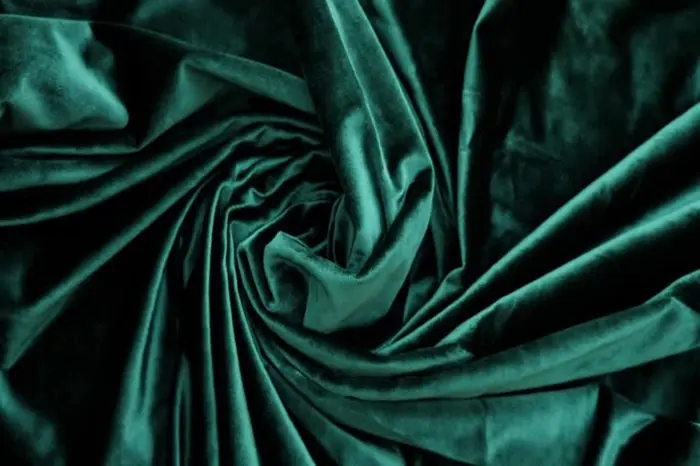Rayon, often marketed as a versatile and comfortable fabric, has gained significant popularity in the fashion industry. From flowy dresses to soft blouses, this semi-synthetic material is ubiquitous in contemporary wardrobes. However, one question that frequently arises among consumers is: Is rayon a cheap fabric? In this article, we will explore the nature of rayon, its manufacturing process, its various uses in fashion, and how it compares to other materials. We aim to provide a comprehensive understanding of rayon that goes beyond the surface-level perception of it being “cheap.”
Understanding Rayon: The Basics
Rayon is a semi-synthetic fiber made from natural sources like wood pulp, which is then chemically processed. First developed in the late 19th century as an alternative to silk, rayon has evolved into various types, including viscose, modal, and lyocell. These different varieties have distinct properties and uses, further complicating the discussion around rayon’s value and quality.
The Manufacturing Process
The production of rayon involves several intricate steps:
Sourcing Raw Materials: The primary source of rayon is cellulose, typically derived from trees like beech, eucalyptus, or pine.
Dissolving the Cellulose: The wood pulp is treated with chemicals to dissolve the cellulose and form a viscous solution.
Regeneration into Fibers: This solution is then extruded through spinnerets to form fibers, which are solidified in a chemical bath.
Finishing: The fibers are washed, dried, and often treated to enhance their properties, such as softness and drape.
This process allows for a variety of rayon types, each with unique characteristics. For instance, modal is known for its softness and breathability, while lyocell boasts excellent moisture-wicking properties.
Rayon’s Qualities: Pros and Cons
Pros of Rayon
Softness and Comfort: One of the most appealing aspects of rayon is its luxurious feel against the skin. It mimics the softness of natural fibers like cotton and silk, making it comfortable to wear.
Versatility: Rayon can be blended with other fabrics like cotton or polyester, enhancing its durability and expanding its uses in fashion.
Drape: Rayon has an elegant drape, which gives garments a beautiful silhouette. This quality is especially favored in dresses, skirts, and blouses.
Breathability: As a breathable fabric, rayon is suitable for warm climates, allowing air circulation and comfort during hotter months.
Cons of Rayon
Durability: While rayon has many positive qualities, it is not as durable as some synthetic fabrics. It can lose strength when wet, making it susceptible to damage from washing.
Care Requirements: Rayon often requires special care, such as dry cleaning or delicate washing, to maintain its appearance and integrity.
Environmental Concerns: The manufacturing process of rayon can be harmful to the environment. Chemicals used in production can pollute water sources, and unsustainable sourcing of wood can lead to deforestation.
Is Rayon Considered Cheap?
Market Perception
The perception of rayon as a “cheap” fabric often stems from its price point and durability issues. Because rayon is relatively inexpensive to produce, it is often sold at lower prices compared to natural fibers like silk or cashmere. However, the term “cheap” can be misleading.
Quality Variations
Not all rayons are created equal. The quality can vary significantly based on the manufacturing process, the type of cellulose used, and the finishing techniques applied. Higher-quality rayon, such as lyocell, can be more expensive and may offer greater durability and environmental sustainability.
See Also: How to Style a Velvet Dress
Cost vs. Value
When evaluating whether rayon is “cheap,” it’s essential to consider the cost versus the value it provides. A rayon blouse may be less expensive than a silk one, but it can still deliver style, comfort, and versatility. For many consumers, the affordability of rayon makes it an attractive option for fashionable clothing without the hefty price tag.
Rayon in Fashion: Uses and Trends
Rayon’s properties make it suitable for various fashion applications, including:
Casual Wear
Rayon is often found in everyday clothing like t-shirts, dresses, and skirts. Its comfort and breathability make it a go-to choice for casual outfits.
Formal Attire
The luxurious drape of rayon allows it to be used in evening wear, cocktail dresses, and formal blouses. Designers often choose rayon for its ability to create elegant silhouettes.
Activewear
Certain rayon blends are used in activewear for their moisture-wicking properties, although it’s essential to ensure the blend is durable enough for physical activity.
Home Textiles
Rayon is not limited to clothing; it is also used in home textiles like curtains and upholstery, thanks to its soft texture and aesthetic appeal.
Sustainability and Rayon: A Double-Edged Sword
As consumers become increasingly conscious of sustainability, the environmental impact of rayon’s production has come under scrutiny. Traditional rayon production can be harmful to forests and water sources. However, newer processes, such as those used to create lyocell, aim to mitigate these issues by utilizing closed-loop systems that recycle chemicals and reduce waste.
Eco-Friendly Alternatives
For those concerned about the environmental impact of rayon, there are alternatives like organic cotton, hemp, and Tencel (a brand of lyocell). These fabrics often boast lower environmental footprints and can be just as stylish.
Conclusion
So, is rayon a cheap fabric? The answer is nuanced. While rayon can be produced at a lower cost and may not offer the durability of some other fabrics, it also delivers exceptional softness, versatility, and comfort that many consumers value. Rather than categorizing rayon as simply “cheap,” it’s more accurate to view it as an accessible fabric that serves a wide range of fashion needs.
In the end, choosing rayon—or any fabric—depends on individual preferences, priorities, and the context of use. Whether you’re seeking a comfortable everyday piece or a stylish formal garment, rayon can be a valuable addition to your wardrobe. As fashion evolves, understanding the materials we wear will help us make informed choices that reflect our values and style.
Related Topics:
What to Wear with a Tan Sweater
What to Wear Over a Dress When It’s Cold

